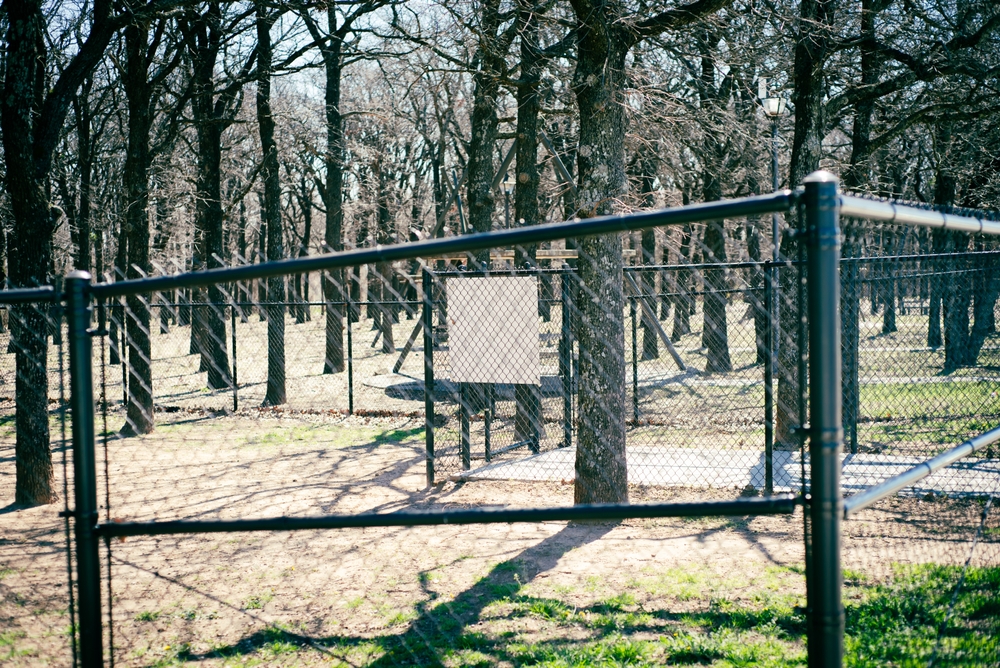Your cart is currently empty!
405 Dogs Rescued in Oklahoma Puppy Mill Bust Raises Animal Welfare Concerns

The recent rescue of 405 dogs from a facility in Stroud, Oklahoma has sparked widespread concern about the realities of puppy mills and the regulatory systems meant to oversee them. The operation, which took place in mid-July 2025, revealed animals living in appalling conditions: cramped cages, unsanitary environments, and overwhelming ammonia odors. Local law enforcement and animal welfare groups intervened after mounting complaints, ultimately charging the owner of Add Love Pets with animal cruelty. The sheer number of animals found—quadruple the count reported in inspections just months earlier—has raised questions not only about the suffering endured by the dogs, but also about how this could have gone undetected for so long.
This bust is more than just another tragic headline; it has become a focal point for larger discussions around pet breeding, licensing, and consumer responsibility. Across the United States, puppy mills continue to operate in legal gray areas, often exploiting weaknesses in inspection systems and public demand for purebred puppies. While the rescue itself is a relief for the dogs involved, the deeper concern lies in what this case says about systemic issues: the inadequacy of enforcement, the pressures faced by underfunded shelters, and the choices consumers make when acquiring pets. These animals’ stories are now intertwined with a broader call for reform, transparency, and compassion in how society treats its most vulnerable companions.

What Happened in Stroud
The Add Love Pets facility had been operating under an expired state license when authorities stepped in. A December 2024 inspection listed just over 100 dogs, yet within seven months that number had ballooned to 405. The surge itself raises suspicions of uncontrolled breeding and neglect. When investigators entered the site, they found conditions that can only be described as squalid: filthy cages, heavily matted coats, untreated medical conditions, and signs of both physical and emotional distress. The dogs were quickly transported to partner shelters and rescue organizations, where teams began the arduous process of medical evaluations, grooming, and rehabilitation.
The scene in Stroud highlights a common pattern in large-scale animal rescues. Reports and complaints often circulate for months, sometimes years, before action is taken. In this case, community voices had long raised alarms, but regulatory systems failed to act decisively until the evidence was overwhelming. For the animals, that delay meant unnecessary suffering. For the rescue organizations suddenly responsible for hundreds of dogs, it meant a logistical crisis: finding space, volunteers, funding, and resources to provide immediate care. The Stroud rescue serves as a sobering reminder that enforcement delays translate directly into animal welfare consequences.
Another striking element was the visible disparity in animal conditions. Some dogs were relatively healthy, while others bore severe signs of neglect, suggesting uneven care or triaging by the operators. This inconsistency complicates investigations, as it can obscure the broader pattern of cruelty until inspectors witness the worst firsthand. The uneven welfare of the animals further reinforces how deceptive appearances can mask widespread abuse.

Legal and Regulatory Gaps
One of the most striking aspects of this case is how it exposes gaps in Oklahoma’s regulatory framework. A license expired at the end of June, but operations continued without interruption. Inspections, when they occur, are often scheduled in advance, which limits their effectiveness in detecting hidden neglect. The discrepancy between the December 2024 report and the July 2025 bust also raises uncomfortable questions: were inspectors misled, or did the situation deteriorate that rapidly? Either way, the system failed to detect and prevent large-scale suffering.
Animal welfare advocates have long argued that the state lacks both the resources and the political will to regulate breeders adequately. Enforcement tends to be reactive rather than proactive, hinging on public complaints instead of consistent oversight. That leaves room for bad actors to expand operations unchecked, especially in rural areas where facilities may not face the same scrutiny as urban kennels. The Stroud case is therefore not just about one breeder’s cruelty—it’s a symptom of a wider problem in how states balance commercial interests with animal welfare.
There is also the matter of transparency. Inspection results are often not easily accessible to the public, making it difficult for consumers to make informed decisions when buying from breeders or pet stores. Without public accountability, poor conditions remain hidden until crises force them into the spotlight. A more open system of reporting could deter negligence by placing reputational and legal pressure on breeders to maintain humane conditions.

The Impact on Animal Welfare
For the dogs themselves, the consequences of neglect are both physical and psychological. Malnutrition, untreated infections, and parasite infestations are common in puppy mills, and many animals require long-term veterinary care even after being rescued. The emotional scars can be just as profound: dogs raised in isolation often fear human contact, struggle with basic socialization, and may never fully adapt to domestic life. Rehabilitation is possible but requires patience, resources, and specialized expertise.
Rescue organizations face enormous challenges in handling these cases. Veterinary bills alone for hundreds of dogs can reach staggering sums, and shelters already stretched thin must suddenly absorb an influx of traumatized animals. Volunteers and foster families step in, but burnout and resource shortages are constant risks. This cycle of crisis management highlights the need for systemic prevention rather than after-the-fact interventions. Every high-profile bust draws public sympathy and donations, but without deeper change, the pattern of suffering and rescue repeats endlessly.
The Stroud case also underscores the broader implications for the animal welfare system as a whole. When shelters divert their resources to emergency rescues, other animals in their care may receive less attention or face longer waits for adoption. This ripple effect spreads the impact of neglect far beyond the immediate victims. Strengthening preventative systems could alleviate this domino effect, ensuring that welfare organizations are not perpetually operating in survival mode.

Expert Perspectives and Local Context
Experts in Oklahoma and beyond have been clear: without stronger laws and better enforcement, puppy mills will continue to flourish. Reports from local media have documented recurring issues with breeders across the state, from unsanitary kennels to overcrowded conditions. Advocates argue that consumer demand, coupled with weak regulation, fuels the persistence of these operations. Kevin Chambers of Animal Wellness Action has emphasized that poor breeding conditions not only harm animals but can also affect public health and consumer trust when families unknowingly purchase sick puppies.
The political debate in Oklahoma reflects the tension between animal welfare and commercial interests. Bills such as House Bill 1421, which has sparked significant debate, illustrate how laws can either empower or restrict local governments from regulating pet sales. While some lawmakers argue for protecting business owners, advocates stress that such measures weaken the ability of cities and counties to address welfare concerns. The Stroud case lands squarely in this debate, giving fresh urgency to the question of whether state law adequately protects animals or merely enables neglect to continue under a veneer of legitimacy.
Nationally, the Humane Society of the United States estimates that there are at least 10,000 puppy mills operating across the country, many unlicensed or unregulated. Oklahoma is often cited as one of the states with high concentrations of commercial breeders, making oversight especially critical. The Stroud incident fits into this larger picture, reminding us that while this case is localized, the issue itself is widespread and systemic.
The Human and Community Dimension
Behind every large-scale rescue are countless human stories. Volunteers like Amber Ridenour, who helped coordinate the removal of hundreds of dogs from the Stroud facility, face an emotional toll as well as a practical one. Witnessing suffering on that scale leaves lasting impressions, and the responsibility of nursing traumatized animals back to health is immense. For many volunteers and staff members, the work is as much about resilience as it is about rescue.
Communities, too, are drawn into these crises. Local shelters suddenly become centers of attention, receiving an influx of donations, adoption requests, and media coverage. Yet once the initial wave of public interest fades, the long-term work remains. Dogs with chronic conditions or behavioral issues may wait months or years before finding permanent homes, if they ever do. The Stroud rescue, like others before it, will reverberate in the community for years, testing both its compassion and its capacity.
At the same time, these rescues create opportunities for communities to rally together. Adoption events, fundraising drives, and volunteer campaigns can build bonds and foster a culture of empathy. While the crisis itself is born of neglect, the response often reveals the best of human generosity. Harnessing that energy for long-term reform could transform short-term compassion into lasting change.
Moving Forward: Lessons and Opportunities
The rescue of 405 dogs in Stroud should not be remembered only as an isolated tragedy. It offers an opportunity for reflection and reform at multiple levels. Stronger, unannounced inspections, clearer penalties for expired licenses, and better funding for enforcement could make meaningful differences. Equally important is consumer awareness: choosing adoption, demanding transparency from breeders, and recognizing the hidden costs of supporting poorly regulated markets.
Change is never simple, and resistance from entrenched interests is inevitable. Yet every major rescue highlights the same truth: prevention is more humane, more efficient, and ultimately more just than relying on after-the-fact interventions. The Stroud case may serve as a wake-up call, both for lawmakers and for individuals, to reconsider how we view and value the animals in our care. By pairing compassion with action—through advocacy, responsible choices, and policy reform—society can honor the lives saved in Stroud and work to ensure fewer animals suffer in silence.
Another lesson is the importance of collaboration across state lines. Puppy mills often operate through networks that cross jurisdictions, selling animals through brokers or online platforms that evade scrutiny. Building interstate partnerships, sharing databases of offenders, and coordinating enforcement could help dismantle these networks. The fight against cruelty must be as interconnected as the problem itself.
